This article was co-authored by wikiHow Staff. Our trained team of editors and researchers validate articles for accuracy and comprehensiveness. wikiHow's Content Management Team carefully monitors the work from our editorial staff to ensure that each article is backed by trusted research and meets our high quality standards.
This article has been viewed 48,479 times.
Learn more...
As hermit crabs grow, they need new shells to move into. It’s really important to provide your hermit crabs with multiple clean shells for them to choose from, and it’s nice for them to have some options so they can move around when they want to. Always boil new shells before adding them to the tank, and clean empty shells every 3 months to keep your hermit crabs happy and healthy.
Steps
Removing Sand and Grit
-
1Rinse off all of the shells with clean water. Hermit crabs poop in their shells and they get filled with sand, substrate, and other gritty things, or if you found your new shells on the beach, there could be other things inside of them. Put all the shells into a colander and rinse them with cool, clean water.[1]
- If you have a lot of shells, work in batches of 10 so that the rinsed away grime doesn’t just end up on the shells at the bottom of the colander.
-
2Scrub away caked on sand and debris with a clean toothbrush. Give each individual shell a gentle scrubbing with either a toothbrush or scrub brush. If there are slimy sections you need to clean, just keep scrubbing them with the toothbrush. All you need is a little elbow grease![2]
- Don’t use any kind of cleaning product on your shells. You may be tempted to spray down the shells with a cleaning product, thinking that will get them even cleaner, but that actually can be really harmful to your hermit crabs.
Advertisement -
3Discard of any shells that are broken or that smell really, really bad. As you rinse and scrub the shells, give each one a quick visual inspection. If you notice any large cracks, chipped areas, or particularly stinky shells, get rid of them. You only want to provide your hermit crabs with the best shells.[3]
- Shells you get from the beach might be a little stinky, but if they smell really strongly, something might have died inside.
-
4Give the shells one final rinse after you’ve scrubbed them. After you’ve spot-cleaned all the shells, spray them down again in the colander to remove any loose grit. You can’t get them too wet, so don’t be afraid to take your time and rinse them thoroughly.[4]
- Your hermit crabs are going to appreciate their clean-smelling homes once you are done!
-
5Clean all new shells before putting them into the tank. You can buy new shells for your hermit crabs at the pet store or online, or you can find them on the beach. Never use a painted or glossed shell—they’re toxic to hermit crabs.[5]
- If you do collect shells from the beach, make sure there aren’t living occupants inside them before you take them home. If there are, leave them alone and find other options.
-
6Maintain the shells already in your tank by rinsing them every 3 months. Set a reminder on your calendar to do a shell-cleaning every 3 months for shells you already have in your tank. Make sure they’re not occupied before you take them out to clean them. This helps remove any bad odors they’ve accumulated over time, which then makes them more attractive to your hermit crabs.[6]
- You can just rinse off and scrub these shells to clean them, or you can go ahead and boil them, too. The choice is up to you! Since they’ve already been in the tank and have been used by your hermit crabs, you don’t need to worry about external bacterias.
Boiling New Shells
-
1Use a glass or ceramic pan to boil your shells. Don’t use a metal pan, as the metal can affect the water and the shells adversely. If your shells extend over the top of the pan, work in batches so that every shell has enough space to be completely submerged in water.[7]
- Some hermit crab enthusiasts suggest cleaning shells in bleach, but even trace amounts of bleach can affect your hermit crab and make them lethargic or even kill them. It’s best to avoid it if you can. Plus, bleach can change the color of the shell.[8]
-
2Fill the pan with enough distilled water to submerge the shells. Always use distilled water to keep unwanted minerals and chlorine from getting into your tank. Add just enough water so that all the seashells are covered completely.[9]
- The temperature of the distilled water doesn’t matter at this point. It’s fine if it’s cold, room-temperature, or warm.
-
3Add 1 to 2 tablespoons (15 to 30 grams) of aquarium salt to the water. Hermit crabs need saltwater to stay healthy, and boiling their shells in a saltwater mixture is just an added boost for them. For less than 10 shells, use 1 tablespoon (15 grams) of aquarium salt, and for more than 10, use 2 tablespoons (30 grams).[10]
- Never use table salt! Only use a salt mixture you get from the pet store that is specifically for marine wildlife.
- It’s okay if you don’t have aquarium salt and can’t add it to the water. It’s good for the hermit crabs, but it also won’t hurt them if the shells are just boiled in the distilled water.
-
4Boil the water, then simmer the shells for 15-20 minutes. Turn the heat on high and keep an eye on the water until it starts to boil. Once it’s boiling, reduce the heat so that the water is at a simmer. Set a timer, let the shells simmer, and stir the water every 5 minutes or so.[11]
- If the water level drops below the shells, add more distilled water to the pan.
-
5Remove the shells from the water using a slotted spoon. Once the timer goes off, turn off the stove burner. Carefully spoon out the boiled shells and lay them out on a clean towel. Let the water in the pan cool down before you empty it out.[12]
- Be careful when removing the shells to not burn yourself.
-
6Dry off the shells with clean paper towels. Once the shells have cooled down enough that you can touch them without burning your hands, take a clean paper towel and pat them dry. As you dry each one, position them so their openings are face-down (this will help them drain and dry faster).[13]
- You could just let the shells air dry. It will take a bit longer, but it won’t hurt them at all.
-
7Let the shells cool down completely before adding them to the tank. It’s essential to let the shells come back to room temperature before you put them into the tank. Don’t put them in the freezer or fridge to speed up the process, though. Just let them rest on the counter for 30 minutes or so until they’re cool.[14]
- A hot shell could change the climate of the tank, and it could hurt a hermit crab that crawls inside it.
-
8Position the shells so that their tops are facing the sides of the tank. A face-down shell won’t attract a hermit crab, so take some care to set them in the tank so that the crabs can easily explore them. If you have really large hermit crabs, you could even leave the openings facing upwards.[15]
- Enjoy watching your hermit crabs explore their new, clean shells!
Community Q&A
-
QuestionCan I use the bleach method for cleaning shells for my hermit crabs?
 Community AnswerNo, this would be harmful to them.
Community AnswerNo, this would be harmful to them.
Warnings
- Hermit crabs are really sensitive to cleaning products and various chemicals, so avoid using sprays and similar things to clean shells.[16]⧼thumbs_response⧽
Things You’ll Need
- Toothbrush or scrub brush
- Ceramic or glass pan
- Distilled water
- Aquarium salt
- Paper towels
- Dishtowels
- Slotted spoon
References
- ↑ https://youtu.be/KtV10bNVjAA?t=159
- ↑ https://youtu.be/KtV10bNVjAA?t=159
- ↑ https://animals.mom.me/clean-extra-hermit-crab-shells-1963.html
- ↑ https://animals.mom.me/clean-extra-hermit-crab-shells-1963.html
- ↑ https://animals.mom.me/clean-extra-hermit-crab-shells-1963.html
- ↑ https://animals.mom.me/clean-extra-hermit-crab-shells-1963.html
- ↑ https://animals.mom.me/clean-extra-hermit-crab-shells-1963.html
- ↑ https://exit63.wordpress.com/how-to-clean-seashells/
- ↑ https://animals.mom.me/clean-extra-hermit-crab-shells-1963.html
- ↑ https://youtu.be/KtV10bNVjAA?t=187
- ↑ https://animals.mom.me/clean-extra-hermit-crab-shells-1963.html
- ↑ https://animals.mom.me/clean-extra-hermit-crab-shells-1963.html
- ↑ https://animals.mom.me/clean-extra-hermit-crab-shells-1963.html
- ↑ https://animals.mom.me/clean-extra-hermit-crab-shells-1963.html
- ↑ https://youtu.be/XJrYpeHGkVA?t=704
- ↑ https://animals.mom.me/clean-extra-hermit-crab-shells-1963.html
About This Article
To clean a new seashell for a hermit crab, start by filling a pot with distilled water and 1-2 tablespoons of aquarium salt. Then, bring the water to a boil before reducing it to a simmer, and add the new seashell to the pot. Next, let the seashell simmer for 15-20 minutes. Finally, remove the seashell with a slotted spoon, and let it cool for 30 minutes before placing it in your hermit crab's tank. To learn how to clean empty seashells that have been sitting in your hermit crab's tank for a while, read on!
-Step-1.webp)
-Step-2.webp)
-Step-3.webp)
-Step-4.webp)
-Step-5.webp)
-Step-6.webp)
-Step-7.webp)
-Step-8.webp)
-Step-9.webp)
-Step-10-Version-2.webp)
-Step-11-Version-2.webp)
-Step-12-Version-2.webp)
-Step-13-Version-2.webp)
-Step-14.webp)
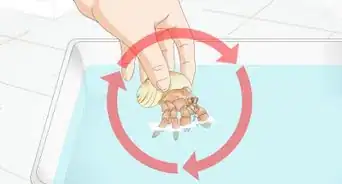
-Step-11.webp)


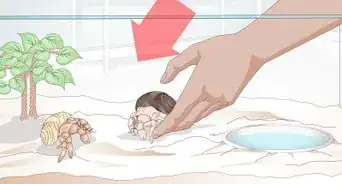




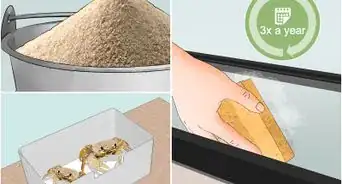


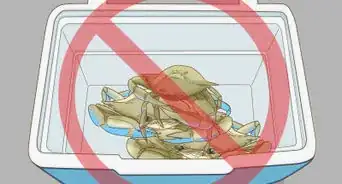








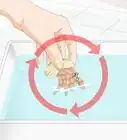
-Step-11.webp)





































